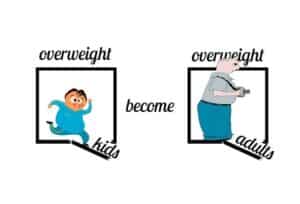
Earlier this week, the Food Institute published a news story headlined “Crops Rotting in Fields With Undocumented Farmworkers Gone,” in which journalist Marcy Kreiter included such quotations as this one from farm owner Lisa Tate:
If 70% of your workforce doesn’t show up, 70% of your crop doesn’t get picked and can go bad in one day… Most farmers here are barely breaking even. I fear this has created a tipping point where many will go bust.
Here we are, once again living in a historical era where people think about money a lot. The topic of money and the subject of obesity impinge upon each other quite extensively. On the one hand, it looks like, for a while anyway, people will find their eating habits painfully costly, and that’s not even for occasional, treat-type eating — but for what used to be considered modestly normal fare, like maybe an omelet. Even way back in the 1950s, the phrase “What’s that got to do with the price of eggs?” could be heard, and it experienced a revival in the early part of this year when egg prices went bananas.
Now, the price of a fast-food drive-through lunch is more like what used to be dinner at a sit-down restaurant. So in a way, rising food prices may affect obesity rates simply because people will not be able to afford sufficient food. That definitely comes under the heading of “mixed blessing.”
On a related topic…
But what actually we hope to look at here is the overall cost of obesity to society as a whole, which is not negligible. Nor is the topic of only recent interest. Way back in 2012, for instance, journalist Jeff Springer compiled a very partial list of some of the ways in which obesity tends to cost everyone money, whatever their own personal weight might happen to be. For instance:
– Americans consume 938 million extra gallons of gas/year due to excess passenger weight which results in an extra $4 billion in obesity-related gasoline costs.
– Airlines use an estimated 350 million additional gallons of fuel to handle excess weight in passengers (a cost which gets passed on to everyone)
– The estimated indirect cost of obesity in America is $450 billion per year
And all of that was more than a dozen years ago. On the individual level…
– Obesity costs the average man an extra $2,646 per year and the average woman an extra $4,879 on average
This could mean a lot of things, from the necessity to buy an extra airplane seat to the bespoke tailoring of plus-size shirts.
At any rate, in the following year, Cardiology Editor Chris Kaiser asked several sources about the government’s use of a 10-year window to calculate the amount of money it might save by projecting the cost of obesity prevention efforts into the future. Perhaps shockingly, a 75-year investment window has been suggested instead. Economist Alex Brill opined,
The 10-year window effectively distorts policymakers’ perspective on preventive health policies by focusing on the initial cost of the interventions and failing to capture the full scope of the policies’ impact in the long term… Properly modeled, effective obesity prevention measures will demonstrate their cost-containment effects outside the 10-year window.
Take, for example, one million American girls for whom early screening could catch their propensity for being overweight before it is too late and potentially save, over time, more than 40 billion dollars. Similarly, participation in the Diabetes Prevention Program that steers a million women away from developing that condition could save, over time, nearly $20 billion. If a million older women were prescribed weight-loss drugs under Medicare Part D, the budget would experience a savings of more than $10 billion, over time. That in itself is a problem, as investors tend to want measurable results that manifest more promptly than “over time.”
The point being, when only a 10-year window of time is under consideration, only the costs for these interventions are apparent (not the payoffs), and interventions may tend to appear superfluous in the short run. By peering several decades into the future, it becomes evident that the savings would be considerable, and worth grasping for.
Your responses and feedback are welcome!
Source: “Crops Rotting in Fields With Undocumented Farmworkers Gone,” FoodInstitute.com, July 7, 2025
Source: “The Economic Costs of Obesity,” BusinessPundit.com, 08/15/12
Source: “Fighting Obesity Long Term Will Save Money,” MedPageToday.com, 04/27/13
Image by geralt/Pixabay

 FAQs and Media Requests:
FAQs and Media Requests: 











